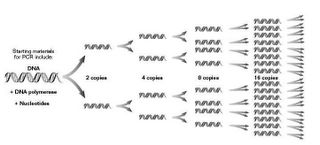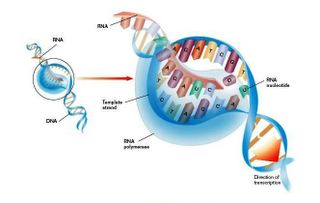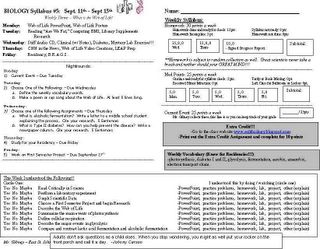ESJH Biology - Med 101
Mr. Gibney's Biology - Med 101 Class Fall 2006 -Check here for assignments, rubrics, extra credit, and life lessons
Sunday, September 24, 2006
Sunday, September 17, 2006
Tuesday, September 12, 2006
For the webquest today:
Try conducting searches on:
Wikipedia
Photosynthesis at Arizona State
Cellular Respiration
Also try searching on google!
Monday, September 11, 2006
Photosynthesis & Cellular Respiration - Study Guide Answers
MULTIPLE CHOICE
1. D
2. C
3. C
4. C
5. C
6. C
7. A
8. D
9. C
10. D
11. B
12. C
13. C
14. D
PROBLEM
15.
a) By placing tank #4 in the refrigerator, Amy would be introducing a second variable, temperature, into her experiment. A true controlled experiment tests only one variable.
b) Amy should find some location for tank #4 that is at as close to the same temperature as the locations where tanks #1, 2, and 3 are to be placed. It would be better to have tank #4 located in a different room than to have it in the same room at a different temperature.
ESSAY
16. Organisms that acquire energy by making their own food are called autotrophs. Plants and certain unicellular organisms are autotrophs. Organisms that gain energy by eating other organisms are called heterotrophs. Some unicellular organisms, as well as all animals and fungi, are heterotrophs.
17. When photons of visible light strike the leaves of a plant, red and blue wavelengths are absorbed by chlorophyll. Green wavelengths, however, are reflected. These reflected photons enter the eyes of the observer, stimulating receptor cells in the eye that can respond to these wavelengths. The observer perceives the leaves as being green.
18. The relationship between photosynthesis and cellular respiration is often described as cyclic because the products of one process are used as the reactants for the other. Photosynthesis produces carbohydrates from carbon dioxide and water, incorporating light energy into the bonds of glucose. Cellular respiration, on the other hand, releases energy from the bonds of glucose for use by the cell, and in the process produces carbon dioxide and water.
19. check your notes from the ppt slide
20. check your notes from the ppt slide
21. check your notes from the diabetes ppt slide
22. check your notes from the ppt slide
23. check your notes from the diabetes ppt slide











